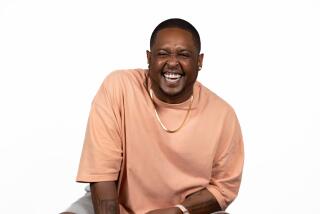<i> Strong Measures: Contemporary American Poetry in Traditional Forms, edited by Philip Dacey</i> a<i> nd David Jauss (Harper & Row: $18.95; 492 pp.) </i>
- Share via
Formal poetry is coming in from the cold, and that should be good news for everyone who cares about the state of the art. Free verse has reigned for nearly a quarter of a century, so long that most writers of it no longer know what they are free of. Our little magazines are crowded, as is often said and usually true, with flat prose arbitrarily divided into lines. “Strong Measures” is the first of three rumored anthologies of formal verse to become fact. As fine as many of its entries are, one reads here the price of 25 years of neglect.
There is a division of purpose about this book which can be best seen by comparing the title and subtitle. Measure means meter, be it accentual, syllabic, or accentual-syllabic. Form, as the editors use the term, means the paragraphing of lines, metrical or nonmetrical, and the naming of the particular form, and where there is no name, making one up. A one-time-only experiment is said to be a “nonce” form (an irritating term everywhere in these pages) but still traditional, because someone may copy it. No, something that happens once is history, but tradition is custom. What is the strategy behind this bending of the word tradition ?
Well, it allows those who ordinarily oppose meter to be included, those who are famous for being famous. We have Allen Ginsberg deserting caterwaul for a romp with doggerel, Diane Wakoski with a free verse sestina, and Denise Levertov with, perhaps, the worst villanelle in the language.
Still, to be fair, this anthology is probably intended for the textbook market, so the emphasis on forms and the presence of certain contributors may be politic.
To return, though, to the problem of meter, if one compares the selections from, say, Richard Wilbur, Donald Justice, and Anthony Hecht with those from the younger poets, one often finds the meters of the latter metrically stiff and monotonous, as if they were trying to recover a lost dialect and were doing so haltingly.
There is much talk these days of a poet finding his voice, but that is found only in conjunction with finding his ear. The two are inseparable.
To illustrate what I mean, let me turn to a recent book, “The Man Who Mistook His Wife for a Hat and Other Clinical Tales,” by the eminent neurologist Oliver Sacks,
Sacks reports that people afflicted with global aphasia, the inability to understand words, have a remarkable ability to recognize dishonesty of manner. “They have an infallible ear for every vocal nuance, the tone, the rhythm, the cadences, the music, the subtlest modulations, inflections, intonations, which can give--or remove--verisimilitude to or from a man’s voice.”
It is the burden of the metrical line to carry what the aphasiac hears. In the act of composition, the poet writes in sentences and lines; he uses the right temporal lobe of the brain and the left. He must have a voice and an ear, for in the moment of composition, he talks to himself.
There are enough instances of the authentic in “Strong Measures” to override my quibbles. In the desert of contemporary poetry, one is grateful for the first oasis.
More to Read
Sign up for our Book Club newsletter
Get the latest news, events and more from the Los Angeles Times Book Club, and help us get L.A. reading and talking.
You may occasionally receive promotional content from the Los Angeles Times.







